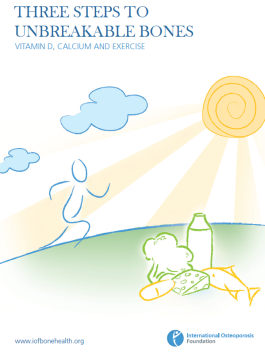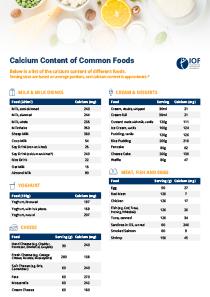TOPIC_ID: 176
MATERIAL_ID: 49
207
170
is_multiple
ADDITIONAL_INFO_ID: 207
ADDITIONAL_INFO_ID: 170
check = 4
FOUND --t_id-- 176 --------- 1
FOUND --t_id-- 176 --------- 1
FOUND --t_id-- 176 --------- 1
FOUND --t_id-- 176 --------- 1
FOUND --t_id-- 176 --------- 1
FOUND --t_id-- 176 --------- 1
FOUND --t_id-- 176 --------- 1
FOUND --t_id-- 176 --------- 1
FOUND --t_id-- 176 --------- 1
FOUND --t_id-- 176 --------- 1
FOUND --t_id-- 176 --------- 1
FOUND --t_id-- 176 --------- 1
FOUND --t_id-- 176 --------- 1
FOUND --t_id-- 176 --------- 1
FOUND --t_id-- 176 --------- 1
FOUND --t_id-- 176 --------- 1
FOUND --t_id-- 176 --------- 1
FOUND --t_id-- 176 --------- 1
FOUND --t_id-- 176 --------- 1
FOUND --t_id-- 176 --------- 1
FOUND --t_id-- 176 --------- 1
FOUND --t_id-- 176 --------- 1
FOUND --t_id-- 176 --------- 1
FOUND --t_id-- 176 --------- 1
FOUND --t_id-- 176 --------- 1
FOUND --m_id-- 49 --------- 2
FOUND --t_id-- 176 --------- 1
FOUND --t_id-- 176 --------- 1
FOUND --t_id-- 176 --------- 1
FOUND --t_id-- 176 --------- 1
FOUND --t_id-- 176 --------- 1
FOUND --t_id-- 176 --------- 1
FOUND --t_id-- 176 --------- 1
FOUND --t_id-- 176 --------- 1
FOUND --t_id-- 176 --------- 1
FOUND --t_id-- 176 --------- 1
FOUND --t_id-- 176 --------- 1
FOUND --t_id-- 176 --------- 1
FOUND --t_id-- 176 --------- 1
FOUND --t_id-- 176 --------- 1
FOUND --t_id-- 176 --------- 1
FOUND --t_id-- 176 --------- 1
FOUND --t_id-- 176 --------- 1
FOUND --t_id-- 176 --------- 1
FOUND --t_id-- 176 --------- 1
FOUND --t_id-- 176 --------- 1
FOUND --t_id-- 176 --------- 1
FOUND --t_id-- 176 --------- 1
FOUND --t_id-- 176 --------- 1
FOUND --t_id-- 176 --------- 1
FOUND --t_id-- 176 --------- 1
FOUND --t_id-- 176 --------- 1
FOUND --t_id-- 176 --------- 1
FOUND --t_id-- 176 --------- 1
FOUND --t_id-- 176 --------- 1
FOUND --t_id-- 176 --------- 1
FOUND --t_id-- 176 --------- 1
FOUND --t_id-- 176 --------- 1
FOUND --t_id-- 176 --------- 1
FOUND --t_id-- 176 --------- 1
FOUND --t_id-- 176 --------- 1
FOUND --m_id-- 49 --------- 2
FOUND --t_id-- 176 --------- 1
FOUND --t_id-- 176 --------- 1
FOUND --t_id-- 176 --------- 1
FOUND --m_id-- 49 --------- 2
FOUND --t_id-- 176 --------- 1
FOUND --t_id-- 176 --------- 1
FOUND --t_id-- 176 --------- 1
FOUND --t_id-- 176 --------- 1
FOUND --t_id-- 176 --------- 1
FOUND --t_id-- 176 --------- 1
FOUND --t_id-- 176 --------- 1
FOUND --t_id-- 176 --------- 1
FOUND --t_id-- 176 --------- 1
FOUND --t_id-- 176 --------- 1
FOUND --t_id-- 176 --------- 1
FOUND --t_id-- 176 --------- 1
FOUND --t_id-- 176 --------- 1
FOUND --t_id-- 176 --------- 1
FOUND --t_id-- 176 --------- 1
FOUND --t_id-- 176 --------- 1
FOUND --t_id-- 176 --------- 1
FOUND --t_id-- 176 --------- 1
FOUND --t_id-- 176 --------- 1
FOUND --t_id-- 176 --------- 1
FOUND --t_id-- 176 --------- 1
FOUND --t_id-- 176 --------- 1
FOUND --t_id-- 176 --------- 1
FOUND --t_id-- 176 --------- 1
FOUND --t_id-- 176 --------- 1
FOUND --t_id-- 176 --------- 1
FOUND --t_id-- 176 --------- 1
FOUND --t_id-- 176 --------- 1
FOUND --t_id-- 176 --------- 1
FOUND --t_id-- 176 --------- 1
FOUND --t_id-- 176 --------- 1
FOUND --t_id-- 176 --------- 1
FOUND --t_id-- 176 --------- 1
FOUND --t_id-- 176 --------- 1
FOUND --t_id-- 176 --------- 1
FOUND --t_id-- 176 --------- 1
FOUND --t_id-- 176 --------- 1
FOUND --t_id-- 176 --------- 1
FOUND --t_id-- 176 --------- 1
FOUND --t_id-- 176 --------- 1
FOUND --t_id-- 176 --------- 1
FOUND --t_id-- 176 --------- 1
FOUND --t_id-- 176 --------- 1
FOUND --t_id-- 176 --------- 1
FOUND --t_id-- 176 --------- 1
FOUND --t_id-- 176 --------- 1
FOUND --t_id-- 176 --------- 1
FOUND --t_id-- 176 --------- 1
FOUND --t_id-- 176 --------- 1
FOUND --t_id-- 176 --------- 1
FOUND --t_id-- 176 --------- 1
FOUND --t_id-- 176 --------- 1
FOUND --t_id-- 176 --------- 1
FOUND --t_id-- 176 --------- 1
FOUND --t_id-- 176 --------- 1
FOUND --t_id-- 176 --------- 1
FOUND --t_id-- 176 --------- 1
FOUND --t_id-- 176 --------- 1
FOUND --t_id-- 176 --------- 1
FOUND --t_id-- 176 --------- 1
FOUND --t_id-- 176 --------- 1
FOUND --t_id-- 176 --------- 1
FOUND --t_id-- 176 --------- 1
FOUND --t_id-- 176 --------- 1
FOUND --t_id-- 176 --------- 1
FOUND --t_id-- 176 --------- 1
FOUND --t_id-- 176 --------- 1
FOUND --t_id-- 176 --------- 1
FOUND --t_id-- 176 --------- 1
FOUND --t_id-- 176 --------- 1
FOUND --t_id-- 176 --------- 1
FOUND --t_id-- 176 --------- 1
FOUND --t_id-- 176 --------- 1
FOUND --t_id-- 176 --------- 1
FOUND --t_id-- 176 --------- 1
FOUND --t_id-- 176 --------- 1
FOUND --t_id-- 176 --------- 1
FOUND --t_id-- 176 --------- 1
FOUND --t_id-- 176 --------- 1
FOUND --t_id-- 176 --------- 1
FOUND --t_id-- 176 --------- 1
FOUND --t_id-- 176 --------- 1
FOUND --t_id-- 176 --------- 1
FOUND --t_id-- 176 --------- 1
FOUND --t_id-- 176 --------- 1
FOUND --t_id-- 176 --------- 1
FOUND --t_id-- 176 --------- 1
FOUND --t_id-- 176 --------- 1
FOUND --t_id-- 176 --------- 1
FOUND --t_id-- 176 --------- 1
FOUND --t_id-- 176 --------- 1
FOUND --t_id-- 176 --------- 1
FOUND --t_id-- 176 --------- 1
FOUND --t_id-- 176 --------- 1
FOUND --t_id-- 176 --------- 1
FOUND --t_id-- 176 --------- 1
FOUND --m_id-- 49 --------- 2
FOUND --t_id-- 176 --------- 1
FOUND --t_id-- 176 --------- 1
FOUND --t_id-- 176 --------- 1
FOUND --t_id-- 176 --------- 1
FOUND --t_id-- 176 --------- 1
FOUND --t_id-- 176 --------- 1
FOUND --t_id-- 176 --------- 1
FOUND --t_id-- 176 --------- 1
FOUND --t_id-- 176 --------- 1
FOUND --t_id-- 176 --------- 1
FOUND --t_id-- 176 --------- 1
FOUND --t_id-- 176 --------- 1
FOUND --t_id-- 176 --------- 1
FOUND --t_id-- 176 --------- 1
FOUND --1-- 170 --------- 1
FOUND --1-- 170 --------- 1
FOUND --t_id-- 176 --------- 1
FOUND --m_id-- 49 --------- 2
FOUND --1-- 207 --------- 3
FOUND --t_id-- 176 --------- 1
FOUND --m_id-- 49 --------- 2
FOUND --1-- 207 --------- 3
FOUND --t_id-- 176 --------- 1
FOUND --m_id-- 49 --------- 2
FOUND --1-- 207 --------- 3
FOUND --1-- 170 --------- 4
FOUND --t_id-- 176 --------- 1
FOUND --1-- 207 --------- 2
FOUND --t_id-- 176 --------- 1
FOUND --1-- 207 --------- 2
FOUND --t_id-- 176 --------- 1
FOUND --1-- 207 --------- 2
FOUND --t_id-- 176 --------- 1
FOUND --1-- 207 --------- 2
FOUND --t_id-- 176 --------- 1
FOUND --1-- 207 --------- 2
FOUND --t_id-- 176 --------- 1
FOUND --1-- 207 --------- 2
FOUND --1-- 170 --------- 3
FOUND --t_id-- 176 --------- 1
FOUND --1-- 207 --------- 2
FOUND --t_id-- 176 --------- 1
FOUND --1-- 207 --------- 2
FOUND --t_id-- 176 --------- 1
FOUND --1-- 207 --------- 2
FOUND --t_id-- 176 --------- 1
FOUND --1-- 207 --------- 2
FOUND --t_id-- 176 --------- 1
FOUND --1-- 207 --------- 2
FOUND --t_id-- 176 --------- 1
FOUND --1-- 207 --------- 2
FOUND --t_id-- 176 --------- 1
FOUND --1-- 207 --------- 2
FOUND --t_id-- 176 --------- 1
FOUND --1-- 207 --------- 2
FOUND --t_id-- 176 --------- 1
FOUND --1-- 207 --------- 2
FOUND --t_id-- 176 --------- 1
FOUND --1-- 207 --------- 2
FOUND --t_id-- 176 --------- 1
FOUND --1-- 207 --------- 2
FOUND --t_id-- 176 --------- 1
FOUND --1-- 207 --------- 2
FOUND --t_id-- 176 --------- 1
FOUND --1-- 207 --------- 2
FOUND --t_id-- 176 --------- 1
FOUND --1-- 207 --------- 2
FOUND --t_id-- 176 --------- 1
FOUND --3-- 207 --------- 2
FOUND --t_id-- 176 --------- 1
FOUND --1-- 207 --------- 2
FOUND --t_id-- 176 --------- 1
FOUND --t_id-- 176 --------- 1
FOUND --m_id-- 49 --------- 1
FOUND --1-- 170 --------- 1
FOUND --1-- 170 --------- 1
FOUND --1-- 170 --------- 1
FOUND --m_id-- 49 --------- 1
FOUND --t_id-- 176 --------- 1
FOUND --1-- 207 --------- 2
FOUND --t_id-- 176 --------- 1
FOUND --m_id-- 49 --------- 2
FOUND --t_id-- 176 --------- 1
FOUND --t_id-- 176 --------- 1
FOUND --t_id-- 176 --------- 1
FOUND --t_id-- 176 --------- 1
FOUND --t_id-- 176 --------- 1
FOUND --t_id-- 176 --------- 1
FOUND --t_id-- 176 --------- 1
FOUND --t_id-- 176 --------- 1
FOUND --m_id-- 49 --------- 2
FOUND --t_id-- 176 --------- 1
FOUND --t_id-- 176 --------- 1
FOUND --t_id-- 176 --------- 1
FOUND --t_id-- 176 --------- 1
FOUND --t_id-- 176 --------- 1
FOUND --t_id-- 176 --------- 1
FOUND --t_id-- 176 --------- 1
FOUND --1-- 170 --------- 1
FOUND --m_id-- 49 --------- 1
TOPIC_ID: 600
MATERIAL_ID: 42
186
594
365
is_multiple
ADDITIONAL_INFO_ID: 186
ADDITIONAL_INFO_ID: 594
ADDITIONAL_INFO_ID: 365
check = 5
FOUND --m_id-- 42 --------- 1
FOUND --1-- 186 --------- 1
FOUND --1-- 186 --------- 1
FOUND --1-- 186 --------- 1
FOUND --1-- 594 --------- 1
FOUND --m_id-- 42 --------- 1
FOUND --1-- 186 --------- 1
FOUND --m_id-- 42 --------- 1
FOUND --m_id-- 42 --------- 1
FOUND --t_id-- 600 --------- 1
FOUND --m_id-- 42 --------- 2
FOUND --1-- 186 --------- 3
FOUND --1-- 594 --------- 4
FOUND --1-- 365 --------- 5
FOUND --t_id-- 600 --------- 1
FOUND --1-- 186 --------- 2
FOUND --1-- 594 --------- 1
FOUND --1-- 594 --------- 1
FOUND --m_id-- 42 --------- 1
FOUND --t_id-- 600 --------- 1
FOUND --1-- 186 --------- 2
FOUND --1-- 594 --------- 3
FOUND --m_id-- 42 --------- 1
FOUND --m_id-- 42 --------- 1
FOUND --m_id-- 42 --------- 1
FOUND --m_id-- 42 --------- 1
FOUND --m_id-- 42 --------- 1
FOUND --m_id-- 42 --------- 1
FOUND --m_id-- 42 --------- 1
FOUND --m_id-- 42 --------- 1
FOUND --m_id-- 42 --------- 1
FOUND --1-- 186 --------- 1
FOUND --m_id-- 42 --------- 1
FOUND --m_id-- 42 --------- 1
FOUND --m_id-- 42 --------- 1
FOUND --m_id-- 42 --------- 1
FOUND --1-- 365 --------- 1
FOUND --1-- 365 --------- 1
FOUND --1-- 186 --------- 2
FOUND --1-- 365 --------- 1
FOUND --1-- 365 --------- 1
FOUND --1-- 365 --------- 1
FOUND --m_id-- 42 --------- 1
FOUND --1-- 365 --------- 2
FOUND --t_id-- 600 --------- 1
FOUND --m_id-- 42 --------- 1
FOUND --m_id-- 42 --------- 1
FOUND --m_id-- 42 --------- 1
FOUND --m_id-- 42 --------- 1
FOUND --m_id-- 42 --------- 1
FOUND --m_id-- 42 --------- 1
FOUND --m_id-- 42 --------- 1
FOUND --m_id-- 42 --------- 1
FOUND --m_id-- 42 --------- 1
FOUND --t_id-- 600 --------- 1
FOUND --m_id-- 42 --------- 2
FOUND --m_id-- 42 --------- 1
FOUND --m_id-- 42 --------- 1
FOUND --m_id-- 42 --------- 1
FOUND --m_id-- 42 --------- 1
FOUND --t_id-- 600 --------- 1
FOUND --1-- 186 --------- 2
FOUND --t_id-- 600 --------- 1
FOUND --1-- 186 --------- 2
FOUND --t_id-- 600 --------- 1
FOUND --1-- 186 --------- 2
FOUND --t_id-- 600 --------- 1
FOUND --1-- 186 --------- 2
FOUND --t_id-- 600 --------- 1
FOUND --1-- 186 --------- 2
FOUND --1-- 186 --------- 1
FOUND --t_id-- 600 --------- 1
FOUND --m_id-- 42 --------- 2
FOUND --1-- 186 --------- 3
FOUND --t_id-- 600 --------- 1
FOUND --m_id-- 42 --------- 1


